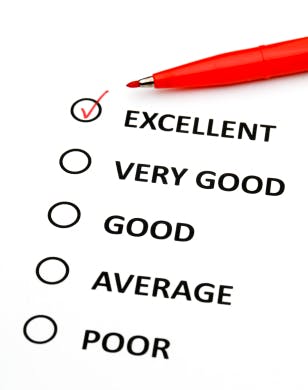What do you do when fear has you paralyzed and it’s preventing you from taking steps that your job demands?
Most self-help gurus I’ve read would probably say, “It’s time to face that fear and do what needs to be done. The fear is always worse than the worst case scenario.” But what if the fear you’re feeling is legitimate, a real threat?
That’s the kind of situation in which many HR leaders find themselves.
46% won’t use assessments or use them incorrectly
Focused on hiring and developing the right talent, smart HR leaders are looking at tools that provide the insights and data to optimize their processes. The problem is, the success of such tools is often dependent on others within the organization using the tools properly, or at all. That’s never truer than when we speak of behavior or personality assessments.
In our recent McQuaig Global Talent Recruitment Survey, HR professionals told us that they haven’t implemented behavior or personality assessments because they fear hiring managers won’t use them (22 percent) or will use them incorrectly (24 percent).
Some hiring managers, they fear, will use the assessments as a crutch, and simply go along blindly with whatever the assessment recommended. Others may do the opposite – preferring their own judgment, they might just toss the assessment results in the trash.
Either way, the assessments won’t do much to help hire and develop the right people – and that could make HR look bad.
I believe that this fear is well founded. In a previous TLNT article, we noted that getting hiring managers engaged in the recruitment process was the No. 1 challenge facing HR.
Using assessments can lower hiring costs
Many assessments today just exacerbate the problem. They’re often so difficult for hiring managers, and even HR professionals, to understand and use, that they practically invite the kinds of problems HR is worried about.
I also believe that it’s possible, and profitable, to overcome this risk. There is now a large body of evidence demonstrating that behavior and personality assessments can substantially and measurably reduce the risk of failed hires.
A 2010 study by the Aberdeen Group, for example, found that organizations using assessments had a 75 percent year-over-year decrease in hiring costs, when compared with organizations that don’t use assessments, and a 250 percent greater year-over-year increase in profit per full-time equivalent.
The key to overcoming the risk and ridding yourself of those nightmares lies in finding the assessment that fits with your organization and then ensuring proper implementation.
4 keys to making them work
Here is how you do that:
- Choose an assessment tied to a specific job or role. Our survey showed that 22 percent of HR professionals don’t feel hiring managers will understand how assessments can predict results in a specific role. This reflects the fact that many traditional assessments provide detailed psychological information about the candidate, but don’t connect that information to the job the person is applying for. Just like reviewing a resume, if it’s not against a specific job, how do you know if a candidate is a fit?
- Choose an assessment that’s both definitive and easy to understand. HR leaders in the study also complained that assessment results are often too difficult to understand without help from the assessment company. To get buy-in, choose an assessment that is easy to understand and implement.
- Choose an assessment that’s not a time burden for managers or candidates. Another concern of HR leaders is that assessments take too long to complete. Many can take 45-90 minutes and respondents fear that A-level talent will balk at such a lengthy exercise. With assessments, longer doesn’t mean better. Industry-leading assessments and profiles can be administered in 15-20 minutes – a time frame our experience has shown to be optimal for the process.
- Choose an assessment that builds buy-in from the start. Our experience has demonstrated that the most effective way to create buy-in is to build it in from the beginning, by embedding assessments early in the talent management process. When assessments are used to create a profile of the ideal candidate, hiring managers are engaged early on in the process by identifying what they need in a successful employee, and then, the results from candidate assessments become much easier to understand and to work with.
The need to be transparent and easy to use
When assessments are difficult to use and disconnected from the specific job being hired for, they’re unlikely to be used as intended, and all the fears of HR leaders may come to pass.
If, however, assessments are transparent, understandable and easy to use for everyone – HR professionals, hiring managers and job candidates alike – then they are far more likely to achieve their goals
